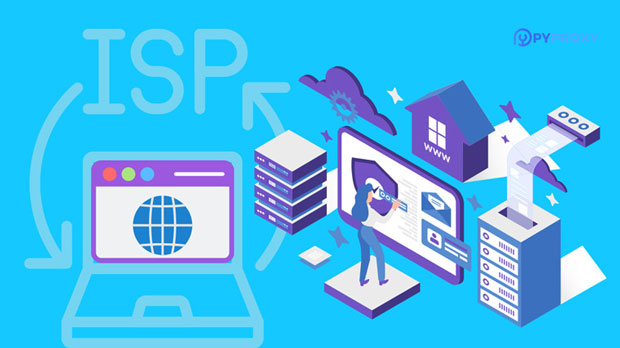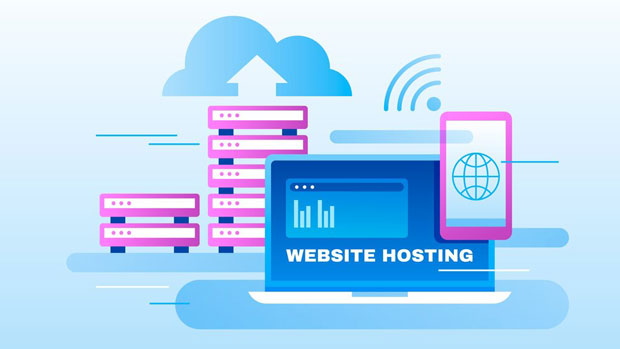PYPROXY is a popular tool for proxy server management and is used extensively for various purposes such as bypassing geographic restrictions, enhancing privacy, and improving internet security. In recent years, the demand for deploying proxy servers, particularly overseas, has seen significant growth. As businesses and individuals seek greater control over their internet traffic and need access to global content, deploying Pyproxy in bulk on overseas servers has become a topic of interest. This article delves into the feasibility, benefits, and considerations involved in bulk deploying Pyproxy on overseas servers, offering valuable insights for organizations looking to expand their global reach and improve their digital infrastructure. What is Pyproxy and Why Consider Bulk Deployment on Overseas Servers?Pyproxy, an open-source proxy tool, simplifies the management and rotation of proxy servers. It is often used in industries where anonymity and global accessibility are crucial, such as digital marketing, data scraping, and even for bypassing government censorship. The core functionality of Pyproxy allows users to route their traffic through multiple servers, masking their original location and IP address.When considering bulk deployment, the primary aim is to expand the operational scope of a business or service across borders. Overseas deployment brings several key advantages, such as reducing latency, improving access to international markets, and providing a layer of security by using proxies located in different countries. However, this comes with technical, legal, and operational challenges that require thorough evaluation.The Advantages of Bulk Deploying Pyproxy Overseas1. Global Coverage and Improved Access Deploying Pyproxy on overseas servers allows businesses to access content or services that are otherwise geo-restricted. This is especially beneficial for businesses offering region-specific products or services, as it can help in reaching customers across different geographical areas. 2. Enhanced Privacy and Security By routing traffic through proxies in multiple countries, businesses can ensure their activities remain anonymous. This is vital for maintaining privacy, particularly in sensitive industries such as finance or cybersecurity. Overseas proxy deployment allows users to mask their original location, providing an extra layer of protection against data theft and cyberattacks.3. Reduced Latency and Better User Experience Deploying proxies near the end-users’ geographical locations can drastically reduce latency. When users access content hosted on servers closer to them, the speed of the internet connection improves, enhancing the user experience. Bulk deployment ensures that no matter where a user is located, they can receive fast and efficient services.4. Scalability for Global Operations As businesses expand, the need for scalability becomes more pronounced. By deploying Pyproxy on overseas servers, companies can scale their operations without the need to manage each individual proxy server separately. A bulk deployment allows the automated handling of traffic and proxy rotation, streamlining management.Challenges of Bulk Deployment on Overseas Servers1. Technical Challenges Bulk deployment of Pyproxy on overseas servers requires a robust technical framework to handle large-scale operations. This includes setting up and maintaining servers in multiple countries, ensuring their optimal performance, and managing the security of each individual proxy server. Automating the deployment and ensuring its reliability across all regions is a significant challenge.2. Compliance with Local Laws and Regulations Every country has its own set of laws regarding internet usage, data protection, and proxy usage. It is essential for businesses to understand and comply with these regulations to avoid legal complications. For instance, some countries have strict anti-censorship laws that may limit the use of proxies or require detailed logging of traffic.3. Network Stability and Speed While bulk deployment may reduce latency, the network stability of overseas servers can vary depending on the country or region. Some areas may experience slower speeds due to underdeveloped infrastructure or congested networks. Therefore, it’s crucial to carefully select the locations where servers will be deployed to ensure stable and fast service delivery.4. Cost Implications Deploying servers overseas can incur additional costs, including server rental, bandwidth costs, and maintenance fees. While the advantages are clear, businesses must carefully evaluate the return on investment (ROI) and ensure that the deployment is cost-effective in the long term.Steps for Deploying Pyproxy in Bulk on Overseas Servers1. Choosing the Right Server Provider The first step is selecting a reliable hosting provider that offers overseas servers. Factors such as server reliability, location variety, and cost-effectiveness should be considered when making this choice. Additionally, some providers offer managed services, which can simplify the deployment process.2. Setting Up Pyproxy After selecting the hosting provider, the next step is to install Pyproxy on each of the overseas servers. This involves configuring the proxy settings, ensuring that the tool is set to rotate proxies at optimal intervals, and ensuring that the proxy network remains secure. Automation tools can be employed to streamline the setup process across multiple servers.3. Configuring Traffic Routing Once Pyproxy is installed, configuring the routing of traffic through the proxies is essential. This involves ensuring that the data is encrypted, ensuring that proxy rotation is occurring properly, and verifying that there are no leaks or vulnerabilities in the network.4. Testing and Monitoring Before going live, thorough testing is necessary to ensure that the proxies are functioning as expected. This includes checking the response times, monitoring the IP rotation, and making sure there are no geo-restriction bypass issues. Continuous monitoring is also needed to identify and resolve any problems promptly.Best Practices for Managing Bulk Pyproxy Deployments1. Regular Updates and Maintenance To ensure smooth and secure operations, regular updates to the Pyproxy software and the underlying server infrastructure are crucial. Security patches and performance improvements should be deployed promptly to minimize vulnerabilities.2. Scalable Monitoring Systems Implementing a scalable monitoring system can help detect issues in real-time and address them before they escalate. This includes setting up alerts for performance issues, downtime, or irregular traffic patterns.3. Backup and Redundancy Plans To prevent downtime, backup servers should be part of the deployment plan. Having a redundancy system in place ensures that if one server fails, another can take over without disrupting the service.4. Data Privacy Compliance Adhering to data protection laws such as GDPR is critical. Businesses should ensure that no sensitive data is compromised through the use of proxies, and should always use secure encryption techniques for any data exchanged over the proxy network.ConclusionBulk deploying Pyproxy on overseas servers offers numerous advantages, including improved access, better privacy, and enhanced scalability. However, it requires careful planning, technical expertise, and an understanding of local laws and regulations. By following best practices and overcoming the challenges involved, businesses can significantly improve their global operations while ensuring the security and privacy of their users. Proper execution of bulk deployments can result in cost-effective, high-performance proxy networks that support a wide range of online activities, from digital marketing to data scraping and beyond.
Aug 08, 2025



































































